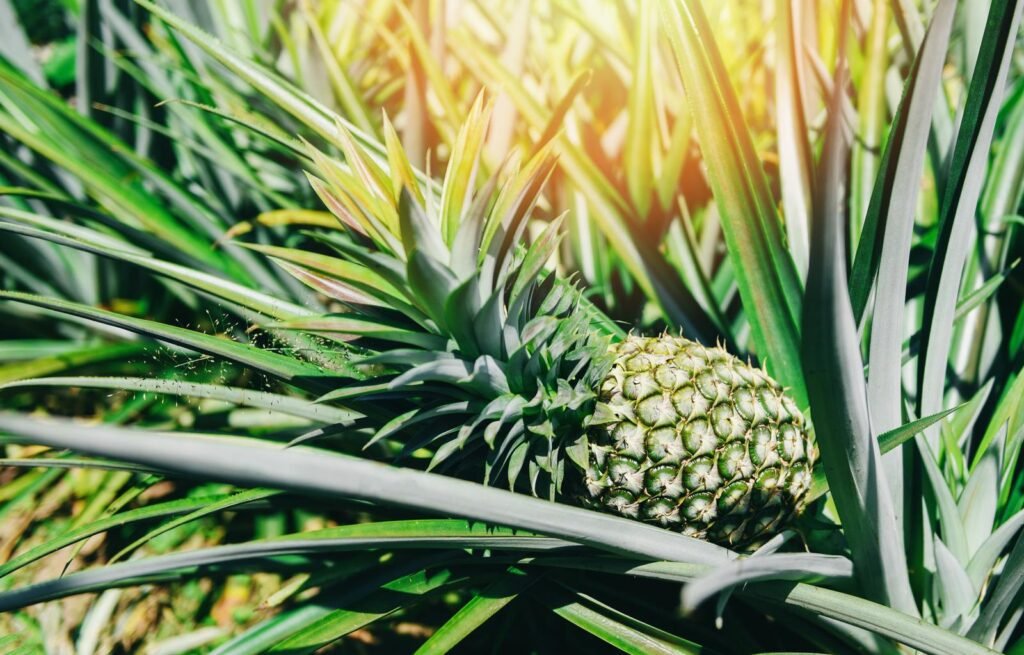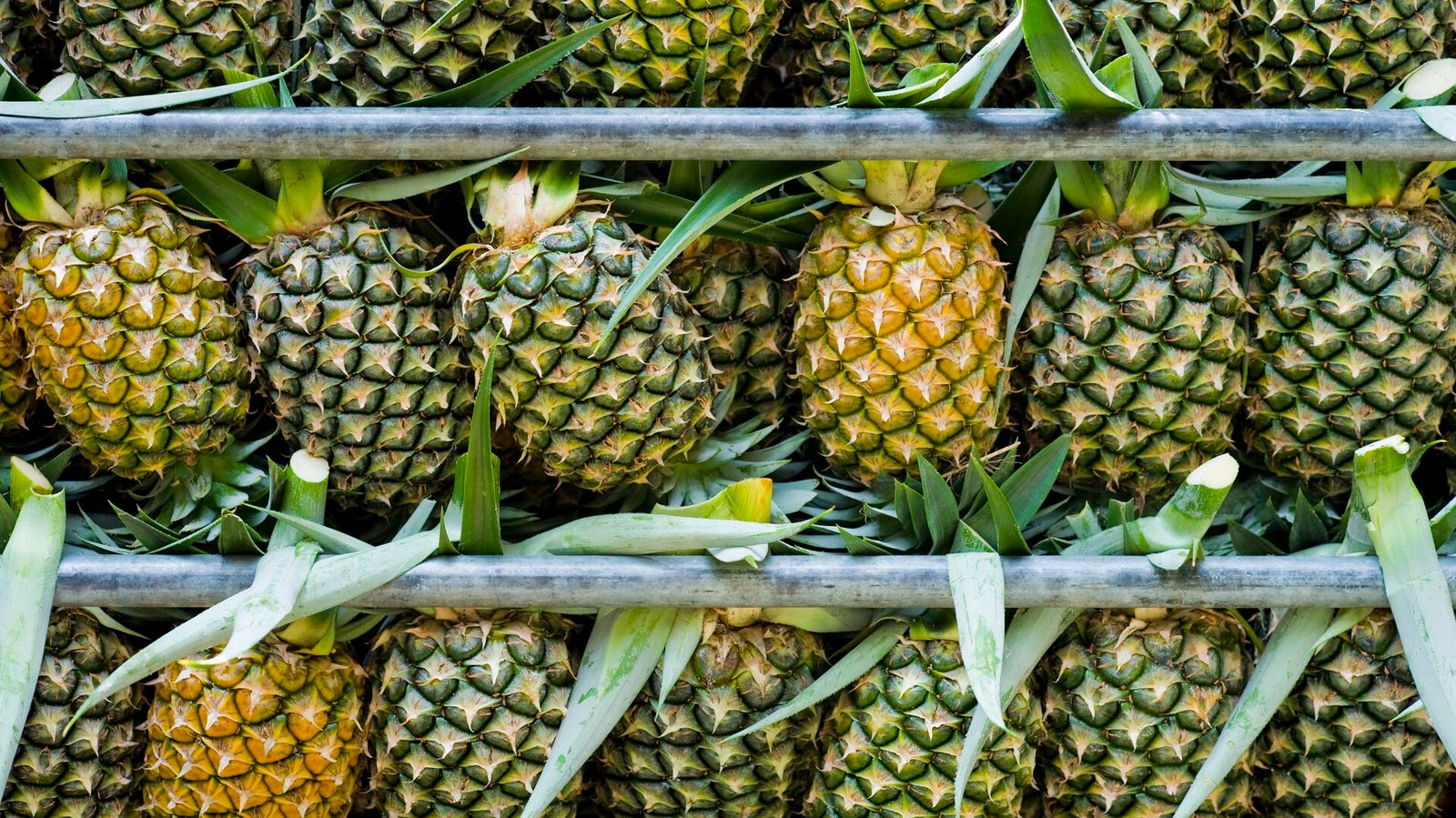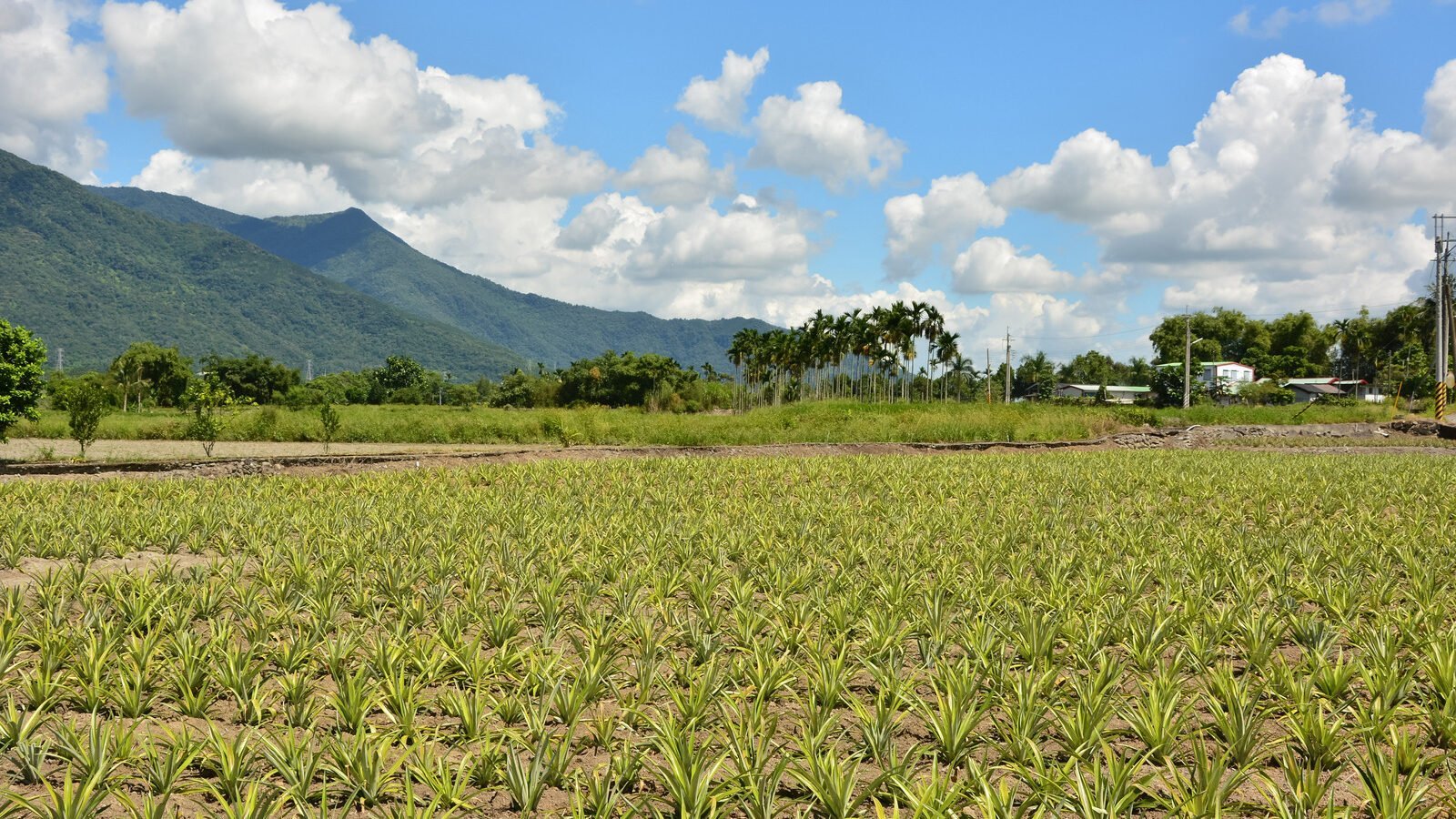If you’re planning on growing pineapples, it’s important to know how long it takes for them to mature. From planting to harvest, the growth time of pineapple plants can vary depending on various factors. In this article, we will take a closer look at the time it takes for pineapples to grow, the factors that influence their growth time, and how to properly care for them throughout each stage of their development.
Whether you’re a seasoned gardener or just starting out, this guide will provide valuable insight into the growth process of pineapples, along with helpful tips to ensure a bountiful harvest. So, let’s dive in and explore the fascinating world of pineapple cultivation!
Factors Affecting Pineapple Growth Time
The time it takes for a pineapple plant to grow can vary depending on a variety of factors. Here are some of the main factors that can influence pineapple growth time:
| Factor | Description |
|---|---|
| Climate | Pineapples thrive in tropical and subtropical regions where temperatures remain consistently warm. A cold climate can slow down pineapple growth and delay the time until maturity. |
| Soil conditions | A well-draining soil with a pH between 4.5 and 5.5 is ideal for pineapple growth. Rocky or poorly drained soil can impede root development and slow down growth. |
| Cultivation practices | The way in which the pineapple plant is cared for can impact growth time. Proper fertilization, irrigation, and pruning can help promote healthy growth and development. |
Other factors that can affect pineapple growth time include the age and quality of the plant, as well as any diseases or pests present in the surrounding environment. When cultivated under optimal conditions, however, a pineapple plant can grow relatively quickly and produce fruit within two to three years.
Pineapple Planting Process

Before planting a pineapple, it’s essential to choose a suitable variety that can thrive in the local climate and soil conditions. The ideal time for planting is during the warm season when the temperature is consistently above 60°F.
Follow these steps for successful planting:
- Obtain a Pineapple Crown: Pineapple plants can be propagated from the crown of a mature pineapple fruit. Cut off the top of the fruit and remove the remaining flesh until only the leafy crown remains.
- Prepare the Soil: Pineapples need well-draining soil with a slightly acidic pH level between 4.5 and 6.5. Add organic matter and sand to improve drainage and loosen compacted soil.
- Plant the Crown: Dig a hole in the soil and place the pineapple crown in the center. Cover the roots completely and firm the soil around the base to secure the plant.
- Water the Plant: Water the plant immediately after planting to help settle the soil. Afterward, water the plant deeply once a week, adjusting for any rain or dry spells.
| Planting Tips: |
|---|
| Plant pineapples in a location that receives plenty of sunlight, ideally at least six hours per day. |
| Space pineapple plants at least three feet apart to allow sufficient room for growth. |
| Use a fertilizer high in potassium and avoid over-fertilization, which can harm the plant. |
During the first few weeks after planting, closely monitor the plant for any signs of stress, such as wilting or yellowing leaves. With proper care and attention, the plant will begin to take root and grow, eventually producing delicious pineapples for you to enjoy!

Early Growth Stages of Pineapple Plants
Once a pineapple plant begins to grow, it goes through several early growth stages. These stages are vital for the plant’s overall development and can affect its fruit-bearing capacity in the long run.
The first stage of growth is the emergence of the first leaves, which occurs about three weeks after planting. These leaves are small and are usually lance-shaped, measuring about 1-2 inches in length.
During the second stage, the plant begins to produce more leaves, and the stem begins to elongate. This stage lasts for about two to three months and is crucial for the plant’s development as it establishes a strong root system and prepares to produce fruit.
The third stage is the development of the fruiting stalk. This stage occurs around five to six months after planting. The stalk emerges from the center of the plant and grows rapidly, reaching up to 3 feet in length. The stalk is then followed by the development of the pineapple fruit itself, which grows from the base of the stalk.
Supporting Early Growth Stages
During the early growth stages of the pineapple plant, it is essential to provide adequate support to ensure the plant’s healthy development. Some of the best practices for supporting early growth stages include:
- Regular watering to maintain soil moisture.
- Using a balanced fertilizer to provide essential nutrients.
- Weeding around the plant to prevent competition for resources.
- Mulching to retain soil moisture and prevent weed growth.
- Protecting the plant from strong winds and extreme temperatures.
By following these practices, you can help your pineapple plant establish a strong foundation that will support healthy growth and fruit development.
Maturation and Fruit Development

Once the pineapple plant has reached maturity, the fruit will begin to develop. It takes approximately 5-6 months for a pineapple to reach full maturity, although this timeframe can vary depending on the variety of pineapple and growing conditions.
The pineapple fruit starts out as a small green bud in the center of the plant, which slowly grows and develops over time. As the fruit matures, it will begin to change color, turning from green to a yellow or orange-yellow hue.
To determine if a pineapple is ready for harvest, gently tug on the leaves at the top of the fruit. If the leaves come out easily, the pineapple is ripe and ready to be harvested. If the leaves are difficult to remove, the pineapple may need more time to mature.
Supporting Fruit Development
During the fruit development stage, it’s important to provide the pineapple plant with the necessary nutrients and water to support healthy growth. Be sure to regularly water the plant, and fertilize as needed to ensure it has access to the necessary nutrients.
It’s also important to provide support to the developing fruit to prevent it from becoming too heavy and breaking off the stem. This can be done using a small net or bag to gently cradle the fruit and hold it in place as it grows.
Harvesting Pineapples

Harvesting pineapples at the right time is essential to ensure the best flavor and quality. Pineapples do not ripen further after harvesting, so it is important to wait until they are fully mature before cutting them from the plant.
When to Harvest Pineapples
The time it takes for pineapples to mature varies by variety, but most varieties are ready for harvest approximately 18-24 months after planting.
Once the pineapple fruit has reached its full size, it will begin to change color and develop a sweet aroma. The skin color of the pineapple will also change from green to yellow or golden brown, depending on the variety.
It is important to wait until the pineapple is fully ripe before harvesting. To check if a pineapple is ready for harvest, gently tug at the leaves in the center of the plant. If they come away easily, the pineapple is almost ready. You can also take a sniff of the base of the fruit, if it smells sweet and fruity, it is ready to pick.
How to Harvest Pineapples
To harvest a pineapple, use a sharp knife or pruning shears to cut the fruit from the base of the plant. Be sure to leave a small piece of the stem attached to the fruit, as this will help to prevent the fruit from spoiling.
After harvesting, remove any excess leaves or plant debris from the fruit, and then rinse it with cool water. Let it dry before storing it in a cool, dry place until you are ready to eat it.
Post-Harvest Handling of Pineapples
Pineapples should be stored at room temperature until they are ready to be eaten, as refrigerating them can cause the fruit to lose its flavor and texture. Once the pineapple has been cut, it should be stored in an airtight container in the refrigerator and consumed within a few days.
Pineapple Growth Time by Variety

While the average time for a pineapple plant to mature is approximately 18 to 24 months, this can vary depending on the pineapple variety. Some varieties may take longer to reach maturity, while others may produce fruit more quickly.
Here are some popular pineapple varieties and their average time to maturity:
| Variety | Average Time to Maturity |
|---|---|
| Smooth Cayenne | 18-24 months |
| Queen | 20-24 months |
| Abacaxi | 24-26 months |
| Pernambuco | 24-26 months |
| Red Spanish | 20-24 months |
It’s important to note that these are just averages, and the actual growth time may vary depending on the specific growing conditions and practices used. However, understanding the growth time by variety can help you plan and manage your pineapple crop more effectively.
Troubleshooting Common Pineapple Growing Problems
Pineapple cultivation can be challenging due to various pests, diseases, and nutrient deficiencies that can damage or kill the plants. Here are some common problems that you may encounter during pineapple growing and some tips on how to resolve them.
Pest Problems
Pineapple plants can be vulnerable to several pests such as mealybugs, scale insects, and spider mites. These pests can sap the vitality of the plant and cause conditions like leaf drop, stunted growth, and deformed fruit.
To control pest infestations, first, identify the type of pest and the extent of the damage. You can then use natural remedies like insecticidal soap, neem oil, or garlic spray to repel or kill the pests. Alternatively, you can introduce natural predators like ladybugs or lacewings to feed on the pests.
Disease Problems
Pineapple plants can also be vulnerable to various fungal and bacterial diseases like fusarium wilt, heart rot, and pink disease. These diseases can cause wilting, yellowing, or browning of leaves, and the fruit may become discolored or rotten.
To prevent or control diseases, ensure that the plants are grown in well-drained soil, and avoid overwatering or overcrowding. If you notice signs of disease, remove and discard affected plants and avoid planting pineapples in the same location for several years. You can also apply fungicides or bactericides to control the spread of the disease.
Nutrient Deficiency Problems
Pineapple plants require adequate nutrients to grow healthily and produce high-quality fruit. However, deficiencies in key nutrients like nitrogen, phosphorus, potassium, magnesium, and iron can cause stunted growth, yellowing of leaves, and poor fruit quality.
To address nutrient deficiencies, get your soil tested to identify any deficiencies or imbalances. You can then add appropriate fertilizers or amendments to boost the soil’s fertility. Organic options like compost, manure, or fish emulsion can also help to improve soil health and nutrient availability.
Frequently Asked Questions about Pineapple Growth Time
Have more questions about growing pineapples? Here are some of the most frequently asked questions about pineapple growth time.
How long does it take for a pineapple plant to produce fruit?
It typically takes about 18-24 months for a pineapple plant to produce fruit after it has been planted. However, this can vary depending on factors such as the pineapple variety, growing conditions, and cultivation practices.
What is the best time of year to plant pineapples?
The best time to plant pineapples is during the warmest months of the year, when temperatures are consistently above 60°F (16°C). In most regions, this means planting in the spring or early summer.
What kind of soil is best for growing pineapples?
Pineapples thrive in well-draining soil that is rich in organic matter. The pH of the soil should be between 4.5 and 5.5. Sandy loam or loamy sand soil types are ideal for pineapple cultivation.
How often should I water my pineapple plants?
Pineapple plants should be watered regularly, but not overwatered. In general, they require about 1-2 inches of water per week. During dry periods, it may be necessary to water them more frequently.
How do I know when my pineapple is ready to harvest?
A ripe pineapple will have a sweet fragrance and a golden color. The top leaves should be easy to remove, and the fruit should be slightly soft to the touch. You can also gently tug on the fruit to see if it comes off easily from the plant.
What are some common pests and diseases that can affect pineapple plants?
Common pests that can affect pineapple plants include mealybugs, scale insects, and spider mites. Diseases that can affect pineapples include heart rot, root rot, and bacterial wilt. It is important to regularly inspect your plants for signs of infestation or disease and take prompt action to control or prevent their spread.





















